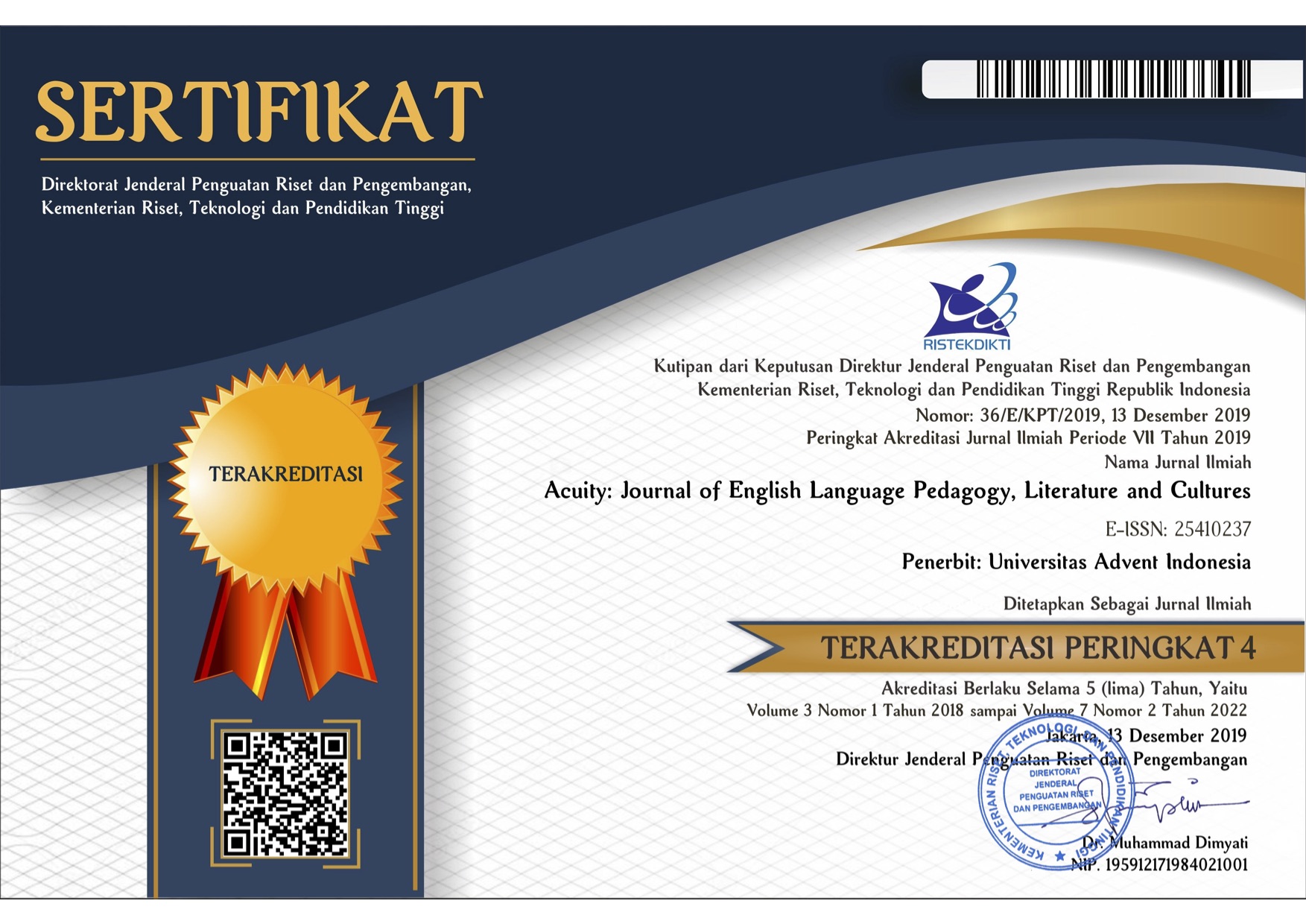MODEL PEMBELAJARAN KOOPERATIF ING NGARSA SUNG TULADHA
Abstract
Today it is often seen on television shows that moral damage to national graduatesis very worrying, acts of corruption (bribery cases), juvenile delinquency, brawls betweenstudents with physical violence, brutal suicide bombings, and anarchists. In responding to thereality of the moral crisis, the alarming character crisis faced by the Indonesian Nation, the2013 Curriculum has emphasized and directed the nature of education to improve attitudes,which is the essence of education in the real context, as also believed by Ki Hadjar Dewantara,MODEL PEMBELAJARAN KOOPERATIF ING NGARSA SUNG TULADHAKartini Hutagaol1, Louise M. Saija2, Debora C. Simanjuntak390regarding the effort in debriefing the national spirit , the spirit of brotherhood, protecting thosewho apply values that exemplify manners, to form moral people, who have a mind set (tocommit) that is in harmony with social values. The author team conducted a cooperativelearning model design that inspired the idea of Ki Hadjar Dewantara, as revealed by Soedjadi"is it not possible to develop learning models or methods that rely on our own philosophy?Furthermore, Soedjadi said, "once again, it is not impossible that new developments aboutlearning models in Indonesia, that model will affect learning in Indonesia." To addressSoedjadi's expression, the writer's team was challenged to design Ing Ngarsa Sung Tuladha'scooperative learning model, in response to Soedjadi's statement (1999, p. 104) "The authorfeels confident that it is possible to construct a learning model that breathes the idea of KiHadjar Dewantara. This early stage research is conducting an empirical study of learningmodels designed to direct, instill attitudes and character in which the teacher / lecturer isplaced or positioned as a leader, who will provide examples or good examples continuously,giving noble examples to those he leads . All of that aims to ignite the souls of the graduates tobecome leaders who have a nationality, unity, brotherhood, without discriminating ethnicity,customs, and religion, so as to avoid violence and anarchism. Empirical study research in theprocess of running, carried out in higher education, high school, junior high school,elementary school in the West Java region. The target population of tertiary education isstudents of the Faculty of Economics in West Java who study Mathematics Economics, andstudents of elementary, middle and high school in West Java. In this empirical research thefirst phase involved 3 students of English B. Study Program and 3 students of MathematicsStudy Program. Provisional assumptions that attitudes, learning outcomes, teamwork,leadership ability, ability to ask questions and provide answers to questions from students arebetter than those who do not use Ing Ngarsa Sung Tuladha's Cooperative Learning Model.Article Metrics
Downloads
Download data is not yet available.
Downloads
Published
2018-12-01
How to Cite
Hutagaol, K., Saija, L. M., & Simanjuntak, D. C. C. (2018). MODEL PEMBELAJARAN KOOPERATIF ING NGARSA SUNG TULADHA. Jurnal Padegogik, 1(2). https://doi.org/10.35974/jpd.v1i2.659
Issue
Section
Articles
License
The submitting author warrants that
- The submission is original and that she/he is the author of the submission together with the named co-authors; to the extend the submission incorporates text passages, figures, data, or other material from the work of others, the submitting author has obtained any necessary permission.
- Articles in this journal are published under the Creative Commons Share-Alike Attribution Licence (CC-BY-SA What does this mean?). This is to get more legal certainty about what readers can do with published articles, and thus a wider dissemination and archiving, which in turn makes publishing with this journal more valuable for you, the authors.
- By submitting an article the author grants to this journal the non-exclusive right to publish it. The author retains the copyright and the publishing rights for his article without any restrictions.







